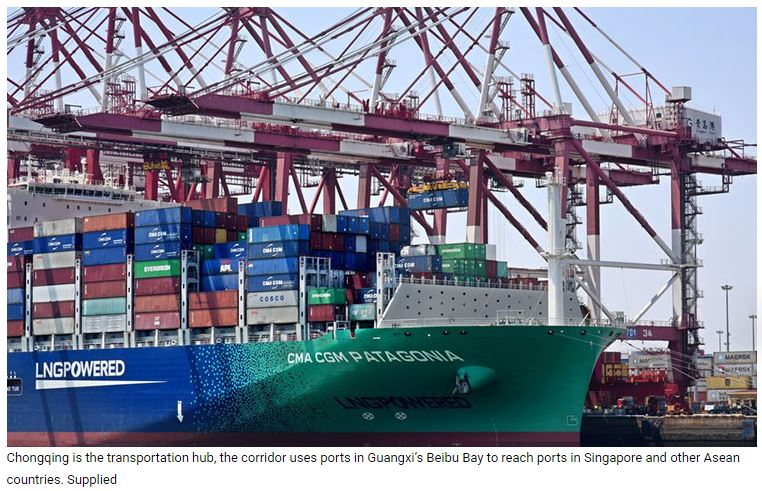New international corridor boosts Asean-China trade
The new International Land-Sea Trade Corridor between China’s western provinces and Asean member states saw 379,000 twenty-foot equivalent unit (TEU) containers transported in the first six months of this year, an increase of 33.4 percent year-on-year.
Launched in 2017, the corridor is a trade and logistics passage jointly built by western Chinese provinces and Asean member states, a release said.
“In the past, it used to take a month for goods from the western region to reach Asean countries via the Yangtze River and the sea route,” said Liang Yu, deputy station director with China Railway Nanning Group Co Ltd. Liang said that goods shipped in Chongqing can now be shipped to Vietnam through the corridor in just four days.
With Chongqing as the transportation hub, the corridor uses ports in Guangxi’s Beibu Bay to reach ports in Singapore and other Asean countries.
The corridor, which covers 14 provinces in China, is linked to 319 ports in 107 countries and regions.
Referring to the corridor at the 12th Pan-Beibu Gulf Economic Cooperation Forum held in Nanning, the capital of Guangxi earlier this month, Basilio Dias Araujo of Indonesia’s Coordinating Ministry for Maritime Affairs and Investment said it brought more opportunities for China-Asean connectivity.
Basilio added that as a maritime country, Indonesia was happy to join in the construction of the corridor, and strengthen cooperation with ports along the route, including the Beibu Gulf Port.
The Beibu Gulf Port, which comprises the ports of Qinzhou, Fangcheng and Beihai, serves as an important transit point in the new trade corridor. In the first half, the port saw its cargo throughput rise 6.95 percent year-on-year to 139 million metric tonnes.
Official data showed that over the past five years, the trade volume between the regions and cities along the corridor in China with Asean has continued to rise, up from $58.9 billion in 2017 to $107.7 billion in 2021.
Senior economist Ky Sereyvath, director-general of the Institute of China Studies at the Royal Academy of Cambodia, said the new trade corridor is a historical achievement for the Kingdom as well. It has opened the country to the larger world and improved its competitiveness, besides saving cost and time on transportation.
Sereyvath also said that the proposal of Prime Minister Hun Sen to set up the Regional Comprehensive Economic Partnership (RCEP) secretariat in Cambodia is a great initiative for building the Kingdom as a business and trade hub for Asean.
The RCEP and the Cambodia-China Free Trade Agreement (CCFTA) have meanwhile considerably expanded the export markets of Cambodia.
Senor Minister Ly Thuch, President of Cambodia’s National Committee for the UN Economic and Social Commission for Asia and the Pacific (UN-ESCAP), recently said thanks to these free trade agreements, Cambodia’s total export to other RCEP member countries reached $3.28 billion in the first half of 2022, up 10 percent year-on-year.
“These positive developments have transformed Cambodia into a more important and potential centre for production, businesses and investments in the region, with larger and more competitive exporting markets all over the world,” he said in a speech at the Policy Dialogue on the Economic and Social Survey of Asia and the Pacific 2022.
Both RCEP and the CCFTA came into effect on January 1 this year. RCEP comprises 15 Asia-Pacific countries including 10 Asean member states and their five trading partners, namely China, Japan, South Korea, Australia and New Zealand.
Source: https://www.khmertimeskh.com/501134103/new-international-corridor-boosts-asean-china-trade/


 English
English




